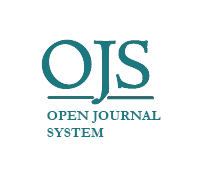Peran Unsur Meta-Utaut, Penerimaan Paylater dan Persepsi Penggunaan Terhadap Antropomofisme Indonesia
DOI:
https://doi.org/10.22219/jrak.v14i1.30186Keywords:
Indonesian Antrhopormorphism, MTAM, Paylater, SEM-ANN, UTAUTAbstract
Purpose: Applying the integration of UTAUT and MTAM theories, this study investigates the acceptance and usage of paylater from the Indonesian anthropomorphism perspective.
Methodology/approach: Quantitative research strategy using methods for gathering data via questionnaires. Using the Lameshow formula, which yields 384.16, the sample size was calculated and rounded to 400 individuals. The combined strategy of the SEM-ANN method is used in this study's data analysis.
Findings: The research presented here demonstrates that behavioral intentions are mostly determined by their performance expectations. The elements of effort expectancy, social influence, facilitating condition, hedonic motivation, habit, and trust in shaping user behavioral intentions all support this. However, perceived risk and perceived cost have the effect of decreasing behavioral intention to use. One of the things that encourages usage behavior is its goal.
Practical implications: This empirical study breaks out the paylater adoption-influencing aspects from an Indonesian social perspective. IT developers can create user-friendly or widely approved paylater applications in this approach.
Originality/value: This study builds pricing value components by combining the UTAUT and MTAM methodologies with structural equation modeling (SEM) and analysis of neural network (ANN) techniques. In recognizing connections that are linear and non-linear.
Downloads
References
Abrahão, R. d. S., Moriguchi, S. N., & Andrade, D. F. (2016). Intention of adoption of mobile payment: An analysis in the light of the Unified Theory of Acceptance and Use of Technology (UTAUT). RAI Revista de Administração e Inovação, 13(3), 221-230. https://doi.org/10.1016/j.rai.2016.06.003
Adirinekso, G. P., Purba, J. T., & Budiono, S. (2020). Measurement of performance, effort, social influence, facilitation, habit and hedonic motives toward pay later application intention: Indonesia evidence. Proceedings of the International Conference on Industrial Engineering and Operations Management,
Al-Saedi, K., Al-Emran, M., Ramayah, T., & Abusham, E. (2020). Developing a general extended UTAUT model for M-payment adoption. Technology in Society, 62. https://doi.org/10.1016/j.techsoc.2020.101293
Alkhalifah, A. (2021). Understanding IoT Mobile Payment Adoption: An Incorporating the UTAUT Theory with the Trust Acceptance Model.
Belanche, D., Guinalíu, M., & Albás, P. (2022). Customer adoption of p2p mobile payment systems: The role of perceived risk. Telematics and Informatics, 72, 101851-101851. https://doi.org/https://doi.org/10.1016/j.tele.2022.101851
Bougie, R., & Sekaran, U. (2020). Research Methods for Business (Eight ed.). John Wiley & Sons Inc.
Davis, F. D. (1989). Perceived Usefulness, Perceived Ease of Use, and User Acceptance of Information Technology. MIS Q., 13, 319-340.
Dazmin, D. (2019). The Relationship Between Consumers’ Price-Saving Orientation And Time-Saving Orientation Towards Food Delivery Intermediaries (FDI) Services: An Exploratory Study. Global Scientific Journals, 7(2), 175-190.
Fahad, & Shahid, M. (2022). Exploring the determinants of adoption of Unified Payment Interface (UPI) in India: A study based on diffusion of innovation theory. Digital Business, 2(2). https://doi.org/10.1016/j.digbus.2022.100040
Fisher, C., Holland, C., & West, T. (2021). Developments in the Buy Now, Pay Later Market. Reserve Bank of Australia Bulletin(March).
Gupta, K. P., Manrai, R., & Goel, U. (2019). Factors influencing adoption of payments banks by Indian customers: extending UTAUT with perceived credibility. Journal of Asia Business Studies, 13(2), 173-195. https://doi.org/10.1108/JABS-07-2017-0111
Hanif, Y., & Lallie, H. S. (2021). Security factors on the intention to use mobile banking applications in the UK older generation (55+). A mixed-method study using modified UTAUT and MTAM - with perceived cyber security, risk, and trust. Technology in Society, 67. https://doi.org/10.1016/j.techsoc.2021.101693
Hapsari, D., Saptono, H., & Widanarti, H. (2019). Kedudukan E-Commerce Dalam Perspektif Undang-Undang Nomor 19 Tahun 2016 Tentang Informasi Dan Transaksi Elektronik. Diponegoro Law Journal, 8, 211-223. https://ejournal3.undip.ac.id/index.php/dlr/
Henseler, J., Ringle, C. M., & Sarstedt, M. (2015). A new criterion for assessing discriminant validity in variance-based structural equation modeling. Journal of the Academy of Marketing Science, 43(1). https://doi.org/10.1007/s11747-014-0403-8
Hidayat, M. T., Aini, Q., & Fetrina, E. (2020). Penerimaan Pengguna E-Wallet Menggunakan UTAUT 2 (Studi Kasus) (User Acceptance of E-Wallet Using UTAUT 2-A Case Study) (Jurnal Nasional Teknik Elektro dan Teknologi Informasi, Issue.
Indrawati, & Al Azim, M. Y. (2022). Factors of Modified UTAUT2 Model Influencing Customer Decisions in Adopting an Application. Italienisch, 12, 483-492.
Kalinić, Z., Liébana-Cabanillas, F. J., Muñoz-Leiva, F., & Marinković, V. (2020). The moderating impact of gender on the acceptance of peer-to-peer mobile payment systems. International Journal of Bank Marketing, 38(1), 138-158. https://doi.org/10.1108/IJBM-01-2019-0012
Kaur, P., Dhir, A., Singh, N., Sahu, G., & Almotairi, M. (2020). An innovation resistance theory perspective on mobile payment solutions. Journal of Retailing and Consumer Services, 55. https://doi.org/10.1016/j.jretconser.2020.102059
Khan, M., & Haque, S. (2020). Impact of Buy Now-Pay Later Mechanism Through Installment Payment Facility and Credit Card Usage on the Impulsive Purchase Decision of Consumers: Evidence From Dhaka City (Southeast University Journal of Arts and Social Sciences, Issue.
Kurniawan, Y., Bhatara, R., & Anwar, N. (2021). Analysis Of The Effect Of Usefulness, Ease Of Use, And Security Perception On Intentions To Use The Paylater Application. Journal of Theoretical and Applied Information Technology, 31(14). www.jatit.org
Levy, P., Lemeshow, S., & Ferketich, A. (2011). Sampling of Populations: Methods and Applications, Fourth Edition. http://lst-iiep.iiep-unesco.org/cgi-bin/wwwi32.exe/[in=epidoc1.in]/?t2000=002779/(100), 42. https://doi.org/10.2307/2348995
Liébana-Cabanillas, F., Singh, N., Kalinic, Z., & Carvajal-Trujillo, E. (2021). Examining the determinants of continuance intention to use and the moderating effect of the gender and age of users of NFC mobile payments: a multi-analytical approach. Information Technology and Management, 22(2), 133-161. https://doi.org/10.1007/s10799-021-00328-6
Mahliza, F. (2020). Consumer Trust In Online Purchase Decision. Epra International Journal of Multidisciplinary Research (IJMR)-Peer Reviewed Journal(2). https://doi.org/10.36713/epra2013
Nezu, T., Hosomi, N., Yoshimura, K., Kuzume, D., Naito, H., Aoki, S., Morimoto, Y., Kinboshi, M., Yoshida, T., Shiga, Y., Kinoshita, N., Furui, A., Tabuchi, G., Ueno, H., Tsuji, T., & Maruyama, H. (2022). Predictors of Stroke Outcome Extracted from Multivariate Linear Discriminant Analysis or Neural Network Analysis. Journal of Atherosclerosis and Thrombosis, 29(1). https://doi.org/10.5551/jat.59642
Nuru, A. S. (2020). Factors Influencing the Adoptation of Mobile Banking Among the Bank Customers in Tanzania. A Case Study of KCB Bank. A Dissertation Submitted in Partial/Fulfillment of the Requirements for Award of the Degree of Master of Business Administration in Corporate Management (MBA-CM) of Mzumbe University.
OJK. (2022). Statistik Fintech Lending https://www.ojk.go.id/id/kanal/iknb/data-dan-statistik/fintech/Pages/Statistik-Fintech-Lending-Periode-April-2022.aspx
Ooi, K. B., & Tan, G. W. H. (2016). Mobile technology acceptance model: An investigation using mobile users to explore smartphone credit card. Expert Systems with Applications,
[Record #162 is using a reference type undefined in this output style.]
Rogers, E. M. (1995). Diffusion of Innovations: Modifications of a Model for Telecommunications. In M.-W. Stoetzer & A. Mahler (Eds.), Die Diffusion von Innovationen in der Telekommunikation (pp. 25-38). Springer Berlin Heidelberg. https://doi.org/10.1007/978-3-642-79868-9_2
Sivathanu, B. (2019). Adoption of digital payment systems in the era of demonetization in India: An empirical study. Journal of Science and Technology Policy Management, 10(1), 143-171. https://doi.org/10.1108/JSTPM-07-2017-0033
Tamilmani, K., Rana, N. P., Dwivedi, Y. K., Sahu, G. P., & Roderick, S. (2018). Exploring the role of 'price value' for understanding consumer adoption of technology: A review and meta-analysis of UTAUT2 based empirical studies. Proceedings of the 22nd Pacific Asia Conference on Information Systems - Opportunities and Challenges for the Digitized Society: Are We Ready?, PACIS 2018,
Türker, C., Altay, B. C., & Okumuş, A. (2022). Understanding user acceptance of QR code mobile payment systems in Turkey: An extended TAM. Technological Forecasting and Social Change, 184. https://doi.org/10.1016/j.techfore.2022.121968
Venkatesh, V., & Davis, F. D. (2000). Theoretical extension of the Technology Acceptance Model: Four longitudinal field studies. Management Science, 46(2). https://doi.org/10.1287/mnsc.46.2.186.11926
Venkatesh, V., Morris, M. G., Davis, G. B., & Davis, F. D. (2003). User Acceptance of Information Technology: Toward a Unified View. MIS Quarterly, 27(3), 425-478. https://doi.org/10.2307/30036540
Venkatesh, V., Thong, J. Y. L., & Xu, X. (2012). Consumer Acceptance and Use of Information Technology: Extending the Unified Theory of Acceptance and Use of Technology. MIS Quarterly, 36(1), 157-178. https://doi.org/10.2307/41410412
Vinerean, S., Budac, C., Baltador, L. A., & Dabija, D.-C. (2022). Assessing the Effects of the COVID-19 Pandemic on M-Commerce Adoption: An Adapted UTAUT2 Approach. Electronics, 11(8). https://doi.org/10.3390/electronics11081269
Walfajri, M. (2019). OJK sebut Kerjasama P2P lending dan ecommerce libatkan 12 layanan pendukung. Kontan. https://keuangan.kontan.co.id/news/ojk-sebut-kerjasama-p2p-lending-dan-ecommerce-libatkan-12-layanan-pendukung#google_vignette
Wang, Y. A., & Rhemtulla, M. (2021). Power Analysis for Parameter Estimation in Structural Equation Modeling: A Discussion and Tutorial. Advances in Methods and Practices in Psychological Science, 4(1). https://doi.org/10.1177/2515245920918253
Yang, C. C., Li, C. L., Yeh, T. F., & Chang, Y. C. (2022). Assessing Older Adults’ Intentions to Use a Smartphone: Using the Meta–Unified Theory of the Acceptance and Use of Technology. International Journal of Environmental Research and Public Health, 19(9). https://doi.org/10.3390/ijerph19095403
Zhang, M. Y., & Williamson, P. (2021). The emergence of multiplatform ecosystems: insights from China's mobile payments system in overcoming bottlenecks to reach the mass market. Technological Forecasting and Social Change, 173. https://doi.org/10.1016/j.techfore.2021.121128
Zhong, Y., Oh, S., & Moon, H. C. (2021). Service transformation under industry 4.0: Investigating acceptance of facial recognition payment through an extended technology acceptance model. Technology in Society, 64. https://doi.org/10.1016/j.techsoc.2020.101515
Downloads
Published
Issue
Section
License
Copyright (c) 2024 NadaFajar Nurmani'ah Widiarti, Nurkholis Nurkholis, Lilik Purwanti

This work is licensed under a Creative Commons Attribution-NonCommercial-ShareAlike 4.0 International License.

Jurnal Reviu Akuntansi dan Keuangan is licensed under a Creative Commons Attribution-NonCommercial-ShareAlike 4.0 International License.
Authors who publish with this journal agree to the following terms:
- Authors retain copyright and grant the journal right of first publication with the work simultaneously licensed under a Creative Commons Attribution-NonCommercial-ShareAlike 4.0 International License that allows others to share the work with an acknowledgement of the work's authorship and initial publication in this journal.
- Authors are able to enter into separate, additional contractual arrangements for the non-exclusive distribution of the journal's published version of the work (e.g., post it to an institutional repository or publish it in a book), with an acknowledgement of its initial publication in this journal.
- Authors are permitted and encouraged to post their work online (e.g., in institutional repositories or on their website) prior to and during the submission process, as it can lead to productive exchanges, as well as earlier and greater citation of published work (See The Effect of Open Access).










